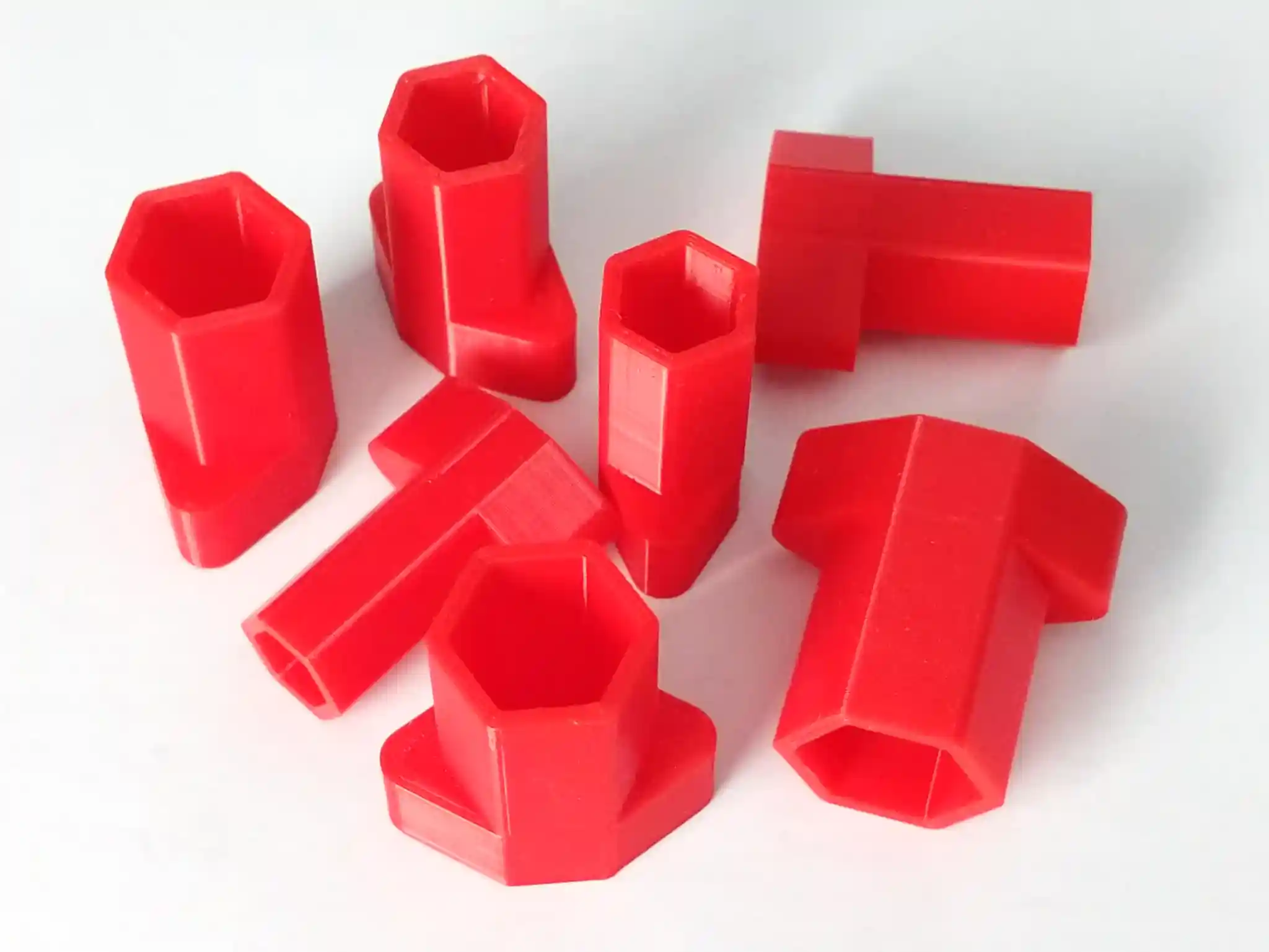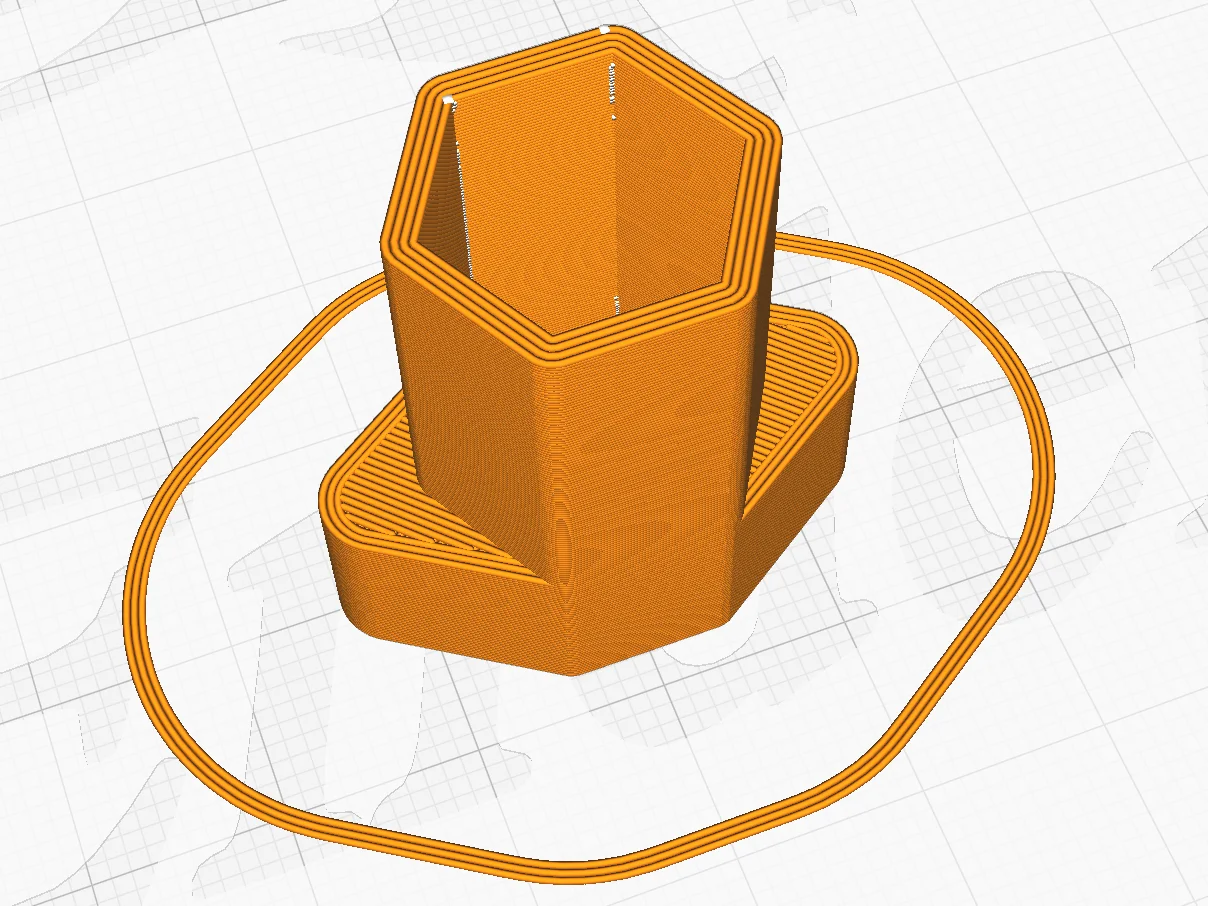3D printable hex sockets for guitar, pedal, and synth DIY
Don’t care about the details, just want the models? Here are the STL files.
When I’m working on guitars, effects pedals, synthesisers, etc., I often find myself removing and tightening nuts on sockets, switches, and potentiometers. Doing this without scratching the surface is sometimes tricky, so I designed a parametric model of a handheld hex socket in OpenSCAD and printed myself a set in various sizes.

Hex sockets in various sizes
You can buy a commercial product that’s similar in the form of Rocket Sockets. I think my design might be more ergonomic, but it’s also much cheaper if you have access to a 3D printer. Theirs are stronger, though!
This is my second version of this design. The first version used a circular perimeter that led to weakness and cracking at the corners, and had squarer handles that were uncomfortable to use for long periods (like when removing and replacing all the front panel nuts on a Korg Monologue).
I went back to the start and redesigned it so that most of the tool could be printed as a series of concentric paths of constant width. This is quicker than infill, and yields a more resilient tool. They are designed with thickness and radii to be printed with a 0.4 mm nozzle. That’s probably the most common size, but if you have a different size you might want to tweak the design.

Designed for speed and strength: consistent width, no gaps
I’ve created models for a range of common sizes. Each socket is 0.2mm larger than its nominal size to accommodate inexactness when printing:
- 7 mm
- 8 mm (also usable for 5/16″ = 7.9 mm)
- 9.5 mm (for 3/8″)
- 10 mm
- 11 mm (also usable for 7/16″ = 11.1 mm)
- 12 mm
- 12.7 mm (1/2″)
- 14 mm
- 15 mm
I’ve been using these successfully for a while now, so I’m confident enough to share them with the world.
You can get the source code from the git repository or just download a zip file of all the STL models.